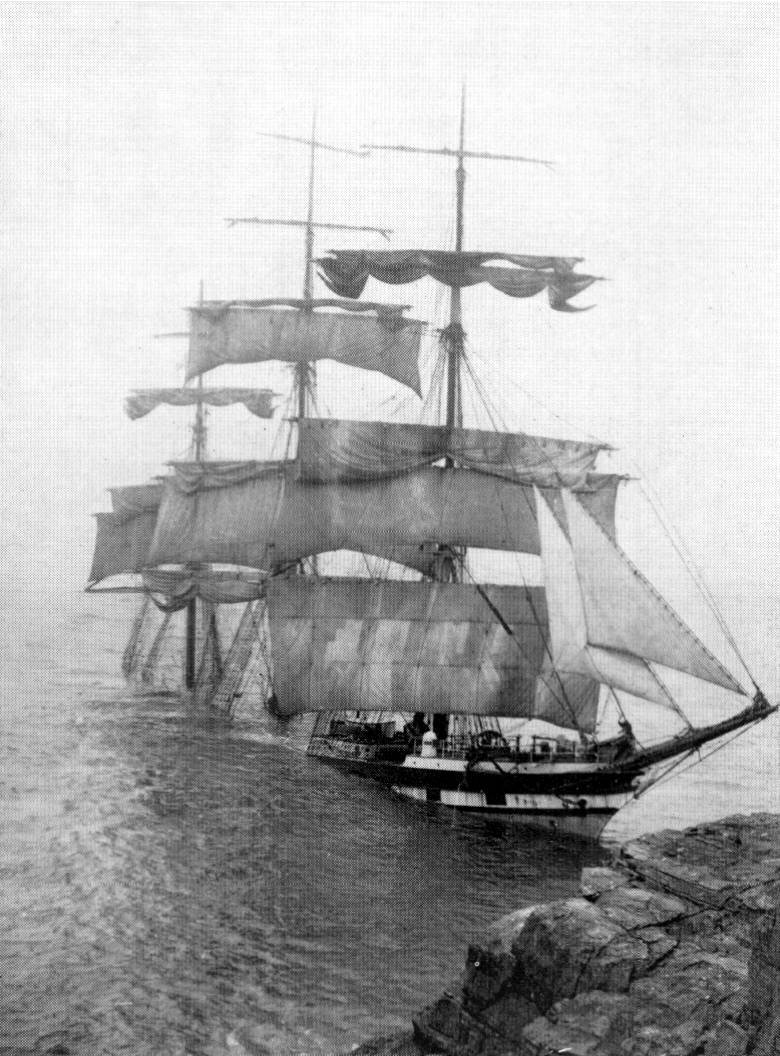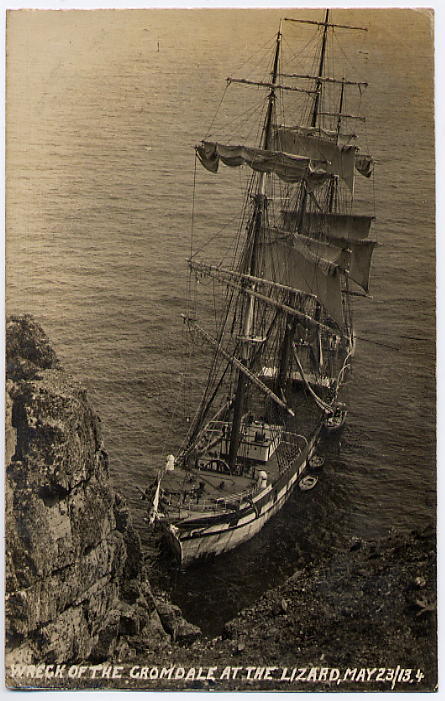The 1,903-tonne steel barque Cromdale ran aground in heavy fog off the coast of Cornwall in May 1913 while carrying nitrates from Chile to Fowey. Within ten minutes she had to be abandoned. All passengers were saved by local lifeboats but the ship was a total loss and within a week the wreck had broken up completely in a heavy gale. Her steel ribs and masts still lie underwater.
According to the St. Keverne wreck diving site:
According to the St. Keverne wreck diving site:
The Lizard is not named after some legendary beast - although it is a land where such stories abound. The name actually comes from the Cornish lezou, or headland. The Lizard is, in fact, a peninsula, whose cliffs support the moorland plateau of Goonhilly Downs, some 300ft above sea level.- A Diver's Guide to the Shipwrecks of the Lizard
The Lizard sticks out into the Channel so far that it is the biggest ship trap in British waters. In fact, so many ships have fallen victim to the Lizard's cliffs and underwater reefs that the Admiralty advises navigators to keep three or more miles off in any kind of rough weather. Those who failed to take that advice have made the Lizard a Mecca for today's wreck divers.
Wreck of the Cromdale (Image from Helston History website)
|
The [Mount Stewart and Cromdale were the] last two ships to be built specially for the Australian wool trade were the magnificent steel skysail-yard ships Mount Stewart and Cromdale. The former was launched in May, 1891, and the latter in June, both from Barclay, Curie's yard. They were identical sister ships, and were the very latest development of the full-rig ship. They were of course good carriers, with the modern short poop and long sweep of main deck. Yet, in spite of their carrying powers, they both made some excellent passages out and home. [...]The Cromdale came to grief in 1913 when commanded by Captain Arthur. She was 126 days out, bound home from Taltal with nitrate and was heading for Falmouth. There had been a dense fog for some days, when, most unfortunately, a steamer was passed which advised Captain Arthur to alter his course. Not long after a light was suddenly seen through the fog ahead, but before the ship could be put about she struck on the rocks right at the foot of a cliff. This proved to be Bass Point, close to the Lizard light. The ship was so badly holed that the captain ordered the boats out at once. Luckily it was calm weather, and some rockets brought the Cadgwith and Lizard lifeboats upon the scene, but the Cromdale settled down so quickly that there was only just time to save the ship's papers and the crew's personal belongings. Lying on the rocks in such an exposed position, it was of course hopeless to think of salving the ship, and the Cromdale became a total loss.
- from The Colonial Clippers, pg 336 (Basil Lubbock, Glasgow, 1921)
Postcard of the Wreck of the Cromdale (from Helston History website)
|



No comments:
Post a Comment